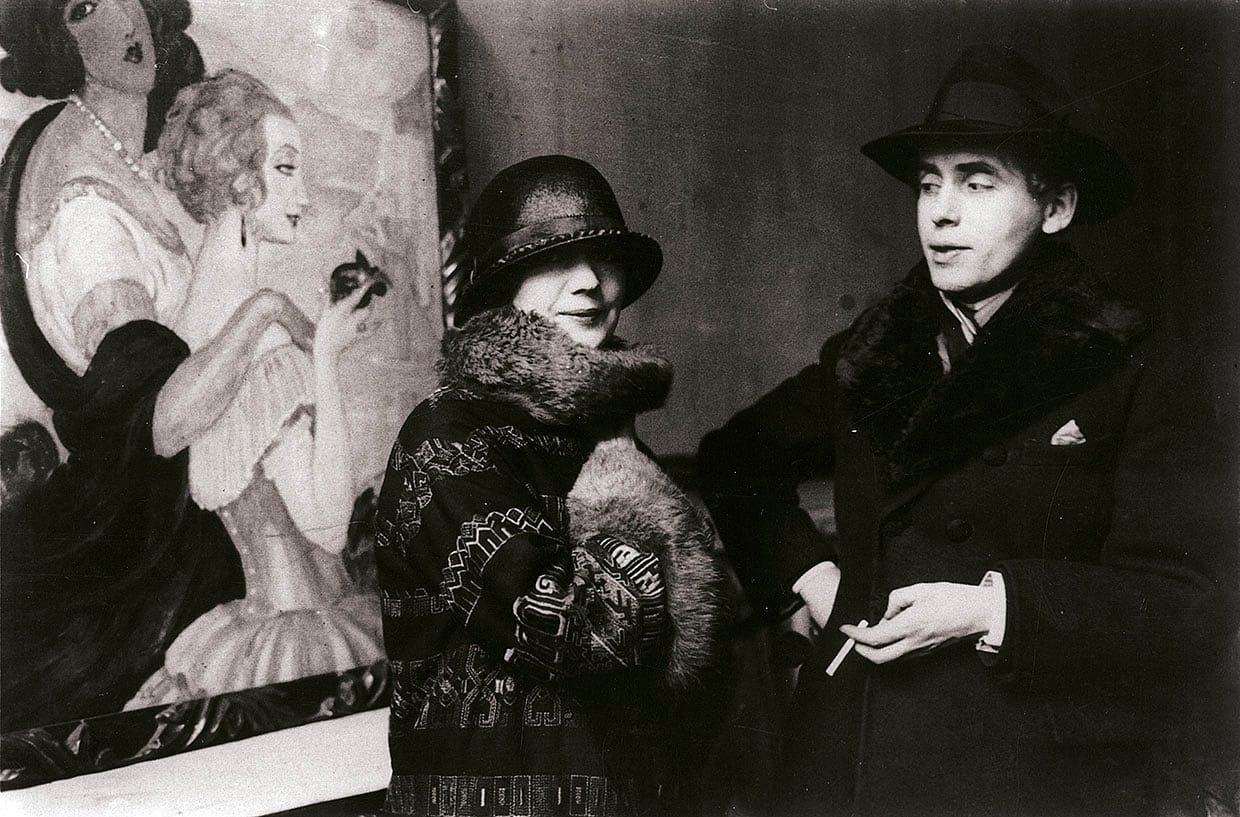A Life in Art
Gerda Wegener, a Danish artist whose life and work remain captivating, significantly impacted art history. While her relationship with transgender pioneer Lili Elbe continues to pique interest, Wegener’s artistic contributions deserve recognition in their own right. Her unique fusion of Art Nouveau and Art Deco, coupled with her exploration of gender and identity, cements her place as a champion of female representation and a significant figure in early 20th-century art.
From Humble Beginnings to the Royal Academy
Gerda Marie Fredrikke Gottlieb was born on March 15, 1885, in the small town of Hammelev, Denmark. Raised in a conservative family, her father a Lutheran vicar of Huguenot descent, young Gerda nevertheless gravitated towards artistic pursuits. This passion led her to Copenhagen, where she honed her skills at the esteemed Royal Danish Academy of Fine Arts. Her talent was evident early on, leading to her debut exhibition at the Charlottenborg Art Gallery in 1904.
A Fateful Encounter: Love and Collaboration
It was at the Academy that Gerda met Einar Wegener, a fellow artist who would later become known as Lili Elbe. The two married in 1904, embarking on a journey of mutual support and artistic exploration. Gerda’s early illustrations often featured Lili as her muse, the seeds of a creative partnership that would evolve in tandem with their personal lives.
As Gerda’s career blossomed, she gained recognition for her illustrations in prominent fashion magazines and literary works. Notable projects include illustrations for “Den skønne Ubekendte” by Andreas Winding (1912), “L’Anneau ou La Jeune fille imprudente” by Louis de Robert (1913), and “Amour Etrusque” by J.-H. Rosny aîné (1914). Her work from this period often exuded the delicate lines and ornate aesthetics characteristic of Art Nouveau.
Artistic Evolution: Embracing Art Deco and Shifting Identities
The 1920s ushered in a period of immense social and artistic change. As Art Deco rose in popularity, with its bold geometry and vibrant energy, so too did Gerda’s style evolve. Her portraits, often depicting women, took on a bolder, more confident air. These women, stylish and self-assured, seemed to embody the burgeoning liberation of the era.
This stylistic shift coincided with Lili’s own journey of self-discovery and transition. Gerda’s art, in turn, began to reflect a deeper exploration of gender and identity. Her depictions of androgynous and increasingly feminine figures suggest a willingness to challenge the rigid gender norms of the time. This exploration, while groundbreaking, led to some of her work being classified as lesbian erotica, highlighting the complex and often controversial intersection of art, sexuality, and social acceptance in the early 20th century.
Love, Loss, and Legacy
The complexities of Gerda and Lili’s relationship continued as Lili underwent gender reassignment surgery in 1930. The marriage, no longer recognized under Danish law, was annulled. Despite the legal and societal pressures of the time, Gerda remained a source of support for Lili throughout her transition. Tragically, Lili passed away in 1931 due to complications from surgery.
Deeply affected by Lili’s death, Gerda returned to Denmark. She continued to paint, though her later work received less commercial acclaim. Gerda Wegener died in 1940 at 55, her artistic contributions somewhat overshadowed by the compelling story of her relationship with Lili.
A Rediscovery and Reassessment
Recent decades have witnessed a resurgence of interest in Gerda Wegener’s life and work. The 2015 film “The Danish Girl,” while a fictionalized account, brought their story to a global audience, sparking conversations about gender identity, transgender rights, and the complexities of love and partnership.
However, it is crucial to recognize Gerda beyond the lens of “The Danish Girl.” Her art, while forever entwined with Lili’s story, stands as a powerful testament to her own talent and vision. Her exploration of gender and identity, her celebration of female strength and beauty, and her unique artistic voice continue to resonate with audiences today, solidifying her rightful place in the pantheon of art history.
Unanswered Questions and Ongoing Research
While much has been written about Gerda Wegener, some aspects of her life remain shrouded in mystery. The details of her life after Lili’s death, including whether or not she remarried, are unclear. Further research into her personal letters, archives, and the social circles she moved within could potentially shed light on these lesser-known chapters of her life.
Additionally, a deeper examination of the art market’s reception of her work during her lifetime would be a valuable area of study. Analyzing how factors like her gender, her relationship with Lili, and the evolving tastes of the art world influenced the reception and perhaps even the commercial success of her work offers a nuanced understanding of the challenges and triumphs she faced as a female artist in the early 20th century.
- Unlocking 2-Letter Words with U: The Definitive Guide - April 4, 2025
- Unlock Words with the Letters THREE: Top Unscramble Tools 2025 - April 4, 2025
- Master Scrabble: X & Z Words for High Scores - April 4, 2025
















